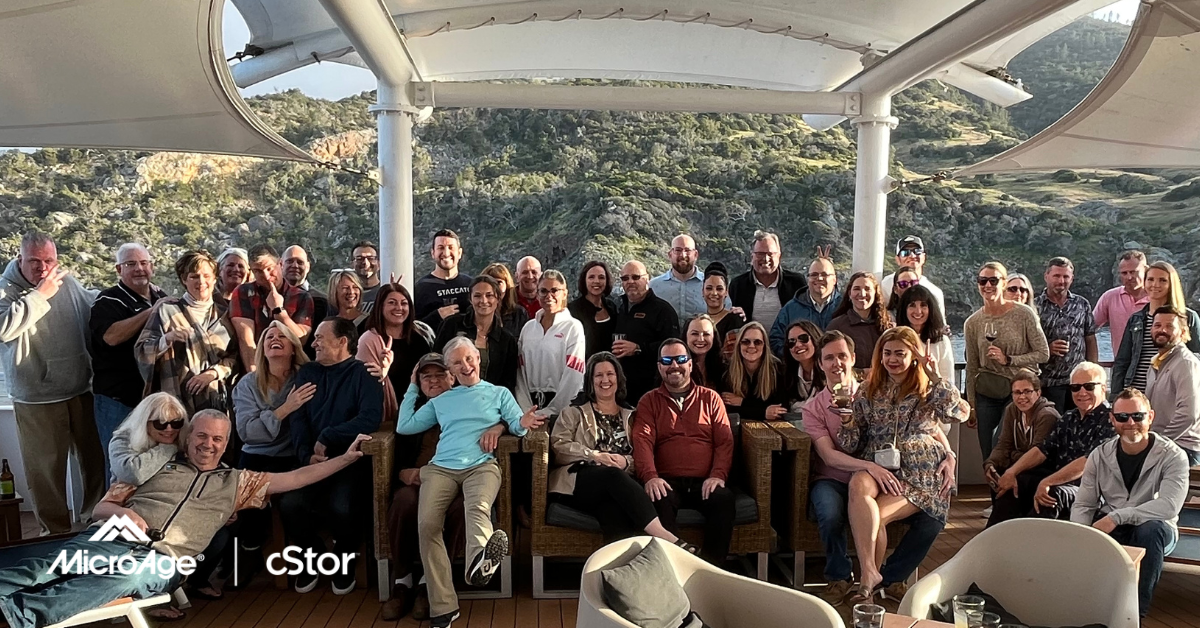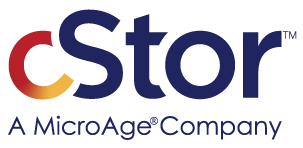Celebrating Our 1 Year Anniversary of the cStor Acquisition
By Rob Zack, CEO, MicroAge

Acquisitions are complex and strategic beasts that can significantly impact the success and growth of your organization. As a CEO, architecting and overseeing an acquisition requires careful planning, effective execution, and seamless integration.
While that might all go without saying, it’s quite interesting to note how many acquisition stories I hear about the churned-out unhappy clients, frustrated leaders, disgruntled associates, and disenfranchised partners. The truth is, acquiring an organization is akin to creating a ‘blended family:’ it takes careful mindfulness of every stakeholder in the game.
So, first and foremost, I am writing to celebrate the one-year anniversary of our successful acquisition of cStor, but just as importantly, to share our progress and key learnings from our collective efforts.
Defining Successful
Yes, I say “successful” very intentionally because not only did we believe this deal was an ideal fit, but we have also seen so many positives that have come from the initial acquisition and our hard work over the past year, which continue to come (more on this in a bit).
Now, that’s not to say everything went perfectly as planned… does anything ever? This is about celebrating the collective talent within both organizations that were already there individually and how together we have become a ‘force multiplier’ for our associates, our clients, our partners, and at this stage, I’m confident in saying our future.
If you’re unfamiliar with the term force multiplier, it’s an interesting reference in military science, identifying a factor or combination of factors that give people or weaponry the ability to accomplish more remarkable feats than without it. In simple business terms, it means ‘factors that multiply effectiveness.’ And that’s exactly what happened and is still happening.
1. Culture Alignment
When we initially approached the cStor leadership team about a potential acquisition, their then CEO, Larry Gentry (now our Executive Vice President), made it abundantly clear that his people came first and there was no compromising. Although there were countless conversations throughout the due diligence process and getting to know their team, that was an early indicator that this was indeed a solid fit, as that has been one of MicroAge’s core tenets from inception.
We were able to bring the companies together without eliminating a single position. Today our retention rate has been astoundingly high, and because of the success, we are still hiring while many organizations are reducing headcount in the current economy. Many of our associates have emerged into new, expanded roles with upward mobility and growth potential. We’ve combined teams and solution areas where it better serves our current and future clients. We’ve integrated shared services functions for efficiency. And in many cases, we helped associates shift into adjacent or entirely new roles where their longer-term passions were calling. These people-related results have culminated in more innovation and growth than we could have ever anticipated.
2. Maximizing Value for Associates, Clients, and Partners
When two organizations join forces, the goal is to create a combined entity that is stronger than the sum of its parts. By identifying and leveraging each other’s strengths, as both cStor and MicroAge leadership teams intended at the onset, we’ve exponentially improved value for each constituency.
We saw the synergies between our offerings early on, as well as the gaps each organization could fill through the acquisition. Understanding those synergies and how they can add fuel to the combined mission is precisely the goal.
3. Alleviating Fears of Change
Change can often be met with resistance, so C-suite teams should prioritize effective communication and support throughout the integration process. By taking time to understand individual growth goals and talents, leaders can help associates navigate the changes and provide opportunities for advancement and personal development. During the acquisition and the following months, we provided frequent, open, and transparent communications to help alleviate fears, increase morale, and foster a culture of collaboration and trust within the newly integrated organization.
The reality is you cannot over-communicate after an acquisition. Remaining clear, transparent, and communicative is paramount to associate retention and satisfaction, so be sure to do it with regularity, through a variety of channels, and in large, small, and individual one-on-one settings. If portions of your base are remote, find creative ways for ‘cameras on’ time so they also feel engaged and connected through the process. A little planning and foresight in communications goes a long, long way.
4. SWOT Evaluation
Before we began the integration process, we conducted a comprehensive SWOT evaluation (strengths, weaknesses, opportunities, and threats) of both organizations. This evaluation helped identify each organization’s strengths, weaknesses, opportunities, and threats, providing valuable insights for integration planning and allowing us to align the right resources to address each layer.
While this may sound ‘old school’ to some, it’s an essential part of integration planning that I recommend you do not forego. Sticking with my prior military analogy helps avoid landmines on both sides and identifies combined opportunities we may not have otherwise seen.
5. Adapting to the Post-COVID Industry Landscape
The COVID-19 pandemic most certainly reshaped the business landscape, requiring many organizations to find new ways to connect with customers face-to-face where possible. Now that we’re back to ‘semi-normal,’ we’ve collectively worked to focus on personal interactions with clients and partners. Don’t underestimate the value of face time. We’ve organized lunches, dinners, and events to nurture those relationships again in new ways. If we can’t meet in person, our rule is that the cameras should always be on.
It’s a Wrap…
As CEOs and leaders, successfully executing an acquisition requires a strategic approach, meticulous planning, and a focus on people. By leveraging the strengths of both organizations and staying mindful of some core tenants from other successful examples, leadership teams can create a merged organization that becomes one of the ‘best places to work’ (yes, that’s a shameful plug!). It’s clear that the collaboration between our newly merged organizations is unlocking tremendous potential for innovation and accelerated growth, and I’m proud of the team’s hard work that got us here. I look forward to continued success and a bright future!








